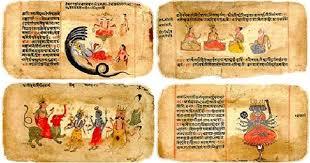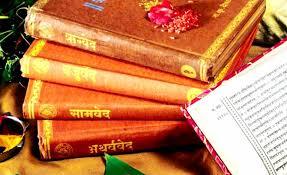- This topic has 0 replies, 1 voice, and was last updated by .
-
AuthorPosts
-
April 2, 2024 at 9:50 pm #1991Up::0
In the calm depths of ancient times, among the unclear coverings of time, lies a treasure collection of deep wisdom and heavenly beauty—the Vedic hymns. These sacred verses, preserved within the timeless pages of the Vedas, echo the voices of ancient fortune tellers, whispering secrets of the universe and separating the mysteries of existence. With each syllable, they create a beautiful picture with words, resonating with the rhythms of the universe and stirring the soul with their overwhelming charm.

The Vedas, respected as the oldest scriptures of Hinduism, include a vast spectrum of spiritual knowledge, covering from prayers to gods and goddesses to philosophical dialogues and ritual chants. Among these shining texts, the Vedic hymns shine as radiant gems, adorned with the types of theoretical insight and holy devotion.
Crafted over 3,500 years ago by the Aryans in ancient India, these hymns stand as a witness to the enduring power of human creativity and spiritual aspiration. They are written in Vedic Sanskrit, a language filled with mystic strength, and are dedicated to various deities such as Agni, Indra, and Soma. Each hymn is a sacred mantra, believed to possess the transformative ability to uplift the mind, body, and spirit.
The poetic beauty of the Vedic hymns lies not only in their deep philosophical content but also in their attractive form and structure. Recited in harmonic accented syllabic style, these hymns radiate a hypnotic melody, captivating the listener and transporting them to realms beyond the ordinary. With three levels of pitch employed—basic reciting tone, and neighbouring tones above and below—the hymns create a mesmerizing aura of perfection.
Termed as “Sukta,” meaning “well-deserved” or “well-written,” these hymns illustrate the peak of poetic excellence. They are composed in different poetic meters such as gayatri, anushtubh, trishtubh, and jagati, each filling the verses with a unique rhythm. The gayatri meter, with its three verses of eight syllables, and the trishtubh meter, with its four verses of eleven syllables, are among the most dominant, diffusing the hymns with lyrical grace and elegance.
Yet, beyond their aesthetic appeal, the Vedic hymns serve a deeper purpose—they are pathways to divine communion and spiritual enlightenment. Rooted in the ancient Sanskrit language, these hymns praise the virtues of gods and goddesses, representing the eternal quest for universal harmony and universal truth. Through their recitation during rituals and ceremonies, they form an integral part of the sacred ritual, guiding seekers on the path of righteousness and devotion.
The Vedas, comprising four parts—Rigveda, Yajurveda, Samaveda, and Atharvaveda—stand as monumental societies of human wisdom and spiritual insight. They are considered “apauruṣeya,” meaning they are authorless, impersonal, and superhuman, transcending the limitations of mortal intellect and imagination.

In essence, the Vedic hymns are more than mere words—they are portals to the divine, channels through which the eternal truths of existence are revealed. In their verses, one glimpses the majesty of creation, the beauty of the universe, and the boundless expanse of the human spirit. They are, indeed, a witness to the enduring power of poetry to uplift, inspire, and illuminate the soul on its timeless journey through the realms of the infinite.
- This topic was modified 1 year ago by .
-
AuthorPosts
- You must be logged in to reply to this topic.